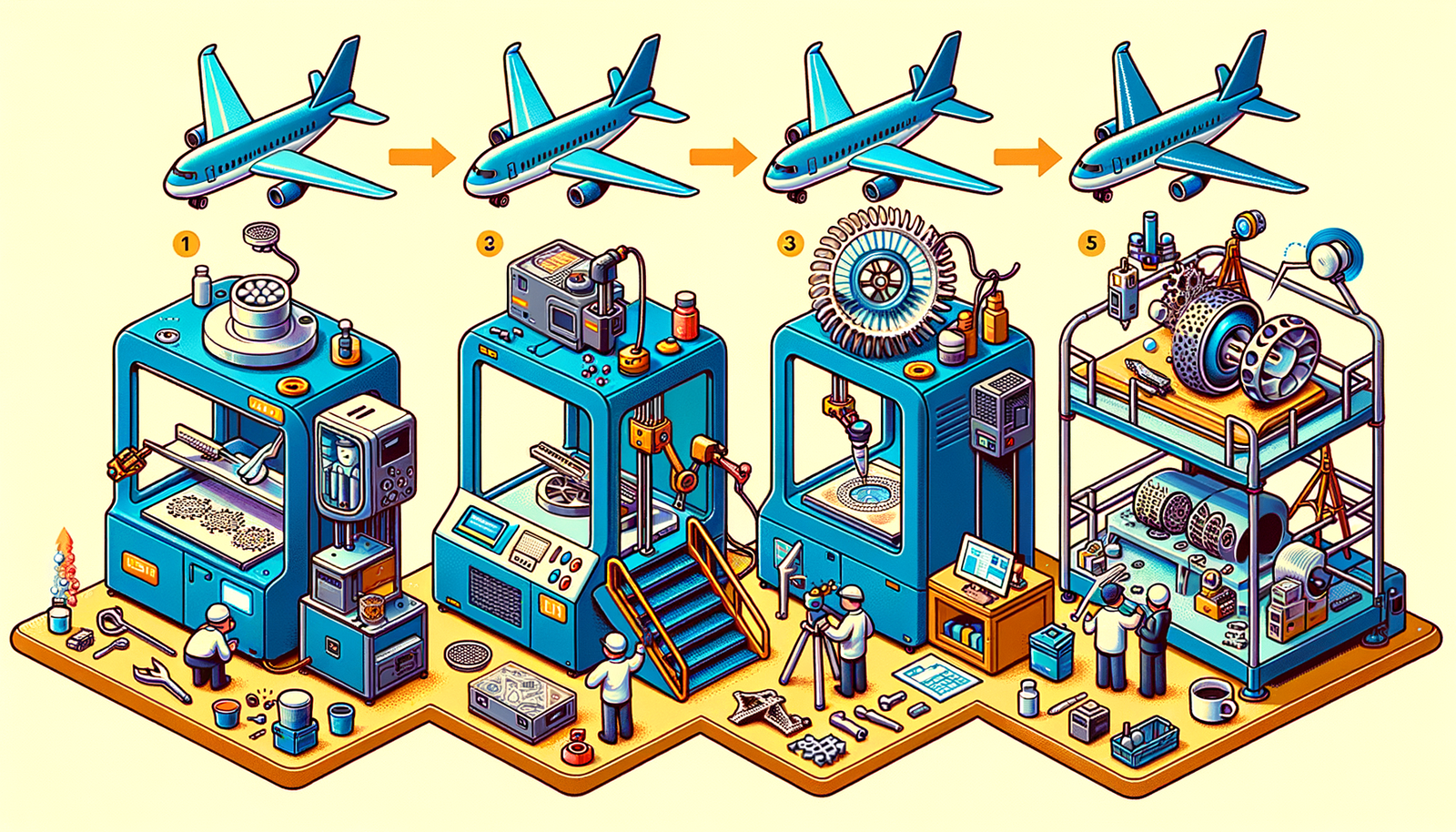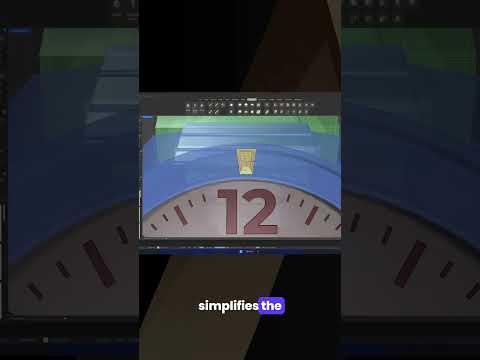Your Cart is Empty
Customer Testimonials
-
"Great customer service. The folks at Novedge were super helpful in navigating a somewhat complicated order including software upgrades and serial numbers in various stages of inactivity. They were friendly and helpful throughout the process.."
Ruben Ruckmark
"Quick & very helpful. We have been using Novedge for years and are very happy with their quick service when we need to make a purchase and excellent support resolving any issues."
Will Woodson
"Scott is the best. He reminds me about subscriptions dates, guides me in the correct direction for updates. He always responds promptly to me. He is literally the reason I continue to work with Novedge and will do so in the future."
Edward Mchugh
"Calvin Lok is “the man”. After my purchase of Sketchup 2021, he called me and provided step-by-step instructions to ease me through difficulties I was having with the setup of my new software."
Mike Borzage
The Impact of Quantum Computing on Future Design Software
August 08, 2024 5 min read


Introduction to Quantum Computing
Definition and Basics
Quantum computing is a revolutionary area of computing that leverages the principles of quantum mechanics to perform calculations. Unlike classical computing, which uses bits as the smallest unit of data, quantum computing employs qubits. Qubits can exist in multiple states simultaneously, thanks to the phenomena known as superposition and entanglement.
In classical computing, a bit can be either 0 or 1. Quantum bits, however, can be both 0 and 1 at the same time. This concept of superposition allows quantum computers to process a vast number of possible outcomes simultaneously. Entanglement, another quantum phenomenon, enables qubits that are entangled to be intrinsically linked, such that the state of one can instantaneously affect the state of another, regardless of distance.
Current State and Advancements
The field of quantum computing is still in its nascent stages, though it has seen significant advancements in recent years. Several major technological corporations and research institutions are actively working on developing practical quantum computers. The current state of quantum computing is typified by experimental setups and prototype systems that can perform specialized tasks, though they have not yet reached the level of general-purpose computing capabilities.
Recent breakthroughs include the development of increasingly stable qubits, error correction techniques, and quantum algorithms that outperform their classical counterparts in specific tasks. Ongoing research aims to overcome the technical challenges and realize the full potential of quantum computing.
Potential Applications in Design Software
Revolutionizing Computational Power
One of the most significant impacts of quantum computing on design software is the exponential increase in computational power. Quantum computers can process and analyze complex simulations and large datasets far more efficiently than classical computers. This immense computational capability can revolutionize various aspects of design, from product development to architectural planning.
Design software that leverages quantum computing will be able to handle extraordinarily complex simulations that involve numerous variables and intricate physical phenomena. For example, engineers could simulate and optimize the aerodynamic properties of a vehicle with unprecedented accuracy and speed.
Enhancing Optimization Algorithms
Optimization problems, which are central to many design tasks, can greatly benefit from quantum computing. Quantum algorithms, such as the Quantum Approximate Optimization Algorithm (QAOA), can solve these problems more efficiently than classical algorithms. This improvement in solving optimization problems can be particularly beneficial in areas such as topology optimization in engineering and architecture.
By using quantum-enhanced optimization algorithms, designers can create more efficient and innovative structures. For instance, quantum computing can assist in identifying the optimal material distribution within a given design space, leading to stronger, lighter, and more sustainable structures.
Impact on Generative Design
Generative design is a process where designers set goals and constraints, and the software generates a wide array of design alternatives. Quantum computing has the potential to accelerate this process by rapidly evaluating and refining numerous design permutations. This capability can enhance creativity and problem-solving in design, enabling the exploration of more radical and innovative solutions.
For example, in architectural design, quantum computing could be used to generate a multitude of building layouts that optimize for factors such as natural light, structural integrity, and energy efficiency, providing architects with a broader range of design options to consider.
Implications for Design Processes and Workflows
Improved Simulation and Modeling
Quantum computing can significantly enhance the accuracy and speed of simulations used in various fields of design. This improvement is particularly impactful in areas like structural engineering, fluid dynamics, and material science. By enabling more precise simulations, quantum computing allows designers to better predict the performance and behavior of their designs under different conditions.
Examples of improved simulations include:
- Structural engineering: Simulating the stress and strain on materials to ensure safety and durability.
- Fluid dynamics: Modeling the flow of liquids and gases around complex geometries to optimize designs for efficiency and performance.
- Material science: Predicting the properties of new materials to create more innovative and effective products.
Collaboration and Data Security
Quantum computing can also enhance secure data exchange and collaboration in design projects. Quantum cryptography, which uses the principles of quantum mechanics to secure communication, offers a higher level of security compared to classical cryptographic methods. This enhanced security is crucial for protecting intellectual property and sensitive data in collaborative design environments.
By implementing quantum cryptography, design teams can securely share and collaborate on projects without the risk of data breaches or unauthorized access. This capability is particularly important in industries where proprietary designs and innovations are valuable assets.
Real-time Feedback and Iteration
One of the transformative potentials of quantum computing in design software is the ability to provide real-time feedback during the design process. This capability can significantly speed up iteration cycles, allowing designers to quickly test, refine, and improve their designs. Faster iteration leads to more innovative and refined final products.
Real-time feedback can be particularly useful in scenarios such as:
- Product design: Rapidly prototyping and testing different design alternatives to identify the best solution.
- Architectural planning: Making on-the-fly adjustments to building layouts and structures based on immediate simulation results.
- Engineering computation: Continuously optimizing complex systems to achieve the desired performance outcomes.
Challenges and Future Prospects
Technical and Practical Barriers
Despite its potential, quantum computing faces several technical and practical barriers that need to be addressed before it can be widely adopted in design software. Current limitations include the need for specialized hardware, such as cryogenic systems to maintain qubit stability, and the challenge of high error rates in quantum computations.
Furthermore, the development of robust quantum algorithms that can be applied to practical design problems is still in progress. Overcoming these barriers requires significant advancements in both hardware and software, as well as ongoing research and development.
Integration with Existing Software
Integrating quantum computing capabilities into existing design software presents another set of challenges. Strategies for this integration include developing hybrid systems that combine classical and quantum computing, as well as creating new software frameworks that can leverage quantum algorithms.
Potential partnerships and collaborations between quantum computing firms and design software developers could accelerate the development and adoption of quantum-enhanced design tools. These collaborations can facilitate the creation of user-friendly interfaces and workflows that make it easier for designers to harness the power of quantum computing.
Looking Forward: Future Trends and Innovations
As quantum computing technology continues to evolve, its impact on design software is expected to grow. Emerging trends include the development of more powerful and stable quantum computers, the creation of advanced quantum algorithms for specific design applications, and the integration of quantum computing into cloud-based design platforms.
Designers and engineers can prepare for these advancements by staying informed about the latest developments in quantum computing, participating in relevant training and education programs, and exploring opportunities for collaboration with quantum computing experts.
Conclusion
Quantum computing holds the potential to transform the design software landscape by providing unprecedented computational power, enhancing optimization algorithms, and enabling real-time feedback during the design process. Despite the current technical and practical barriers, ongoing research and collaboration between quantum computing firms and design software developers will drive the integration of quantum capabilities into design tools.
As we look to the future, the continued evolution of quantum computing is poised to unlock new possibilities for innovation and creativity in design. By staying informed and embracing these advancements, designers and engineers can position themselves at the forefront of this transformative technology.
Also in Design News

Design Software History: The Evolution of 3D Printing in Aerospace: From Prototyping to Production
November 27, 2024 7 min read
Read More
Cinema 4D Tip: Optimizing Workflow with Team Render in Cinema 4D
November 27, 2024 2 min read
Read MoreSubscribe
Sign up to get the latest on sales, new releases and more …



